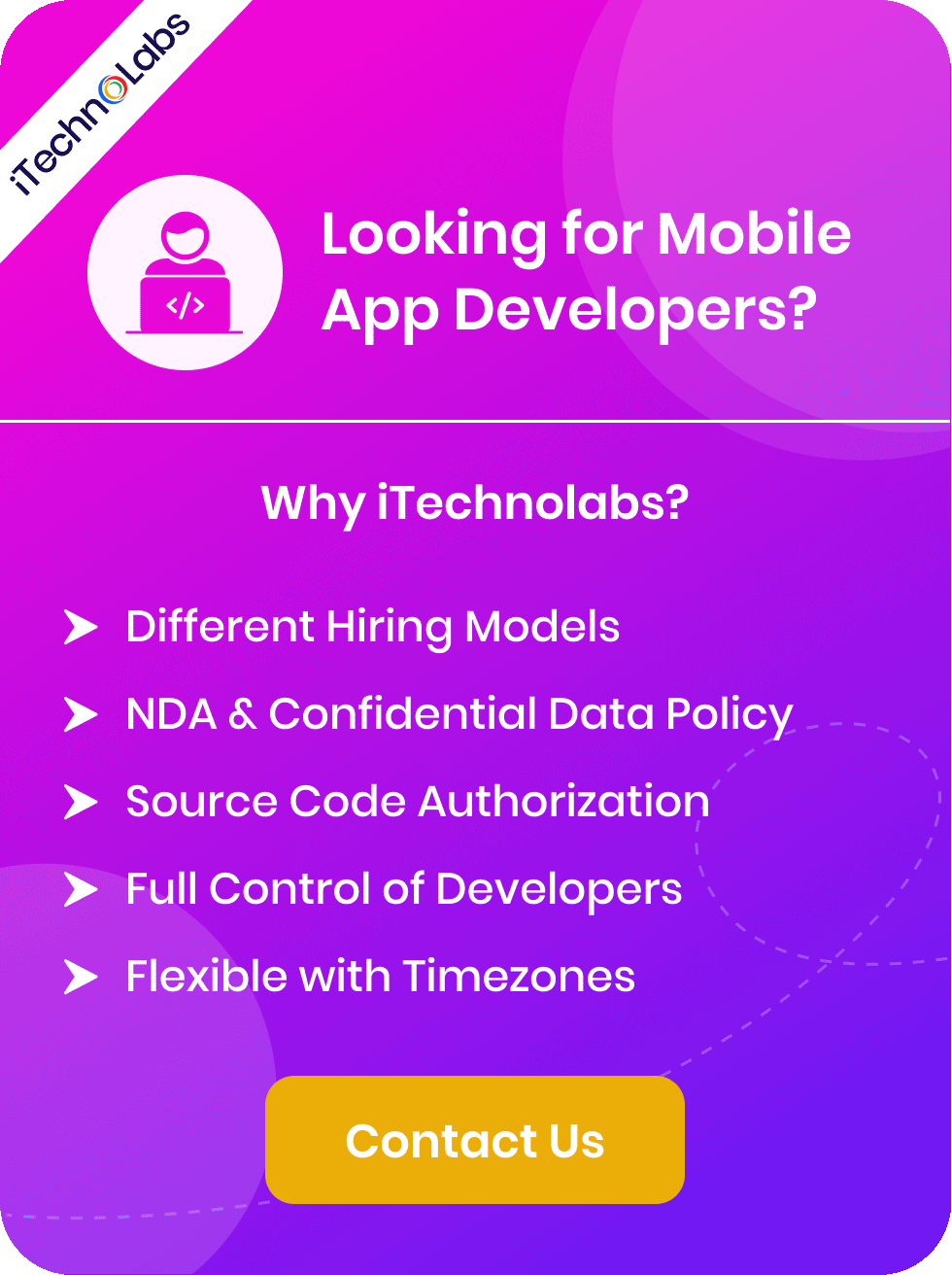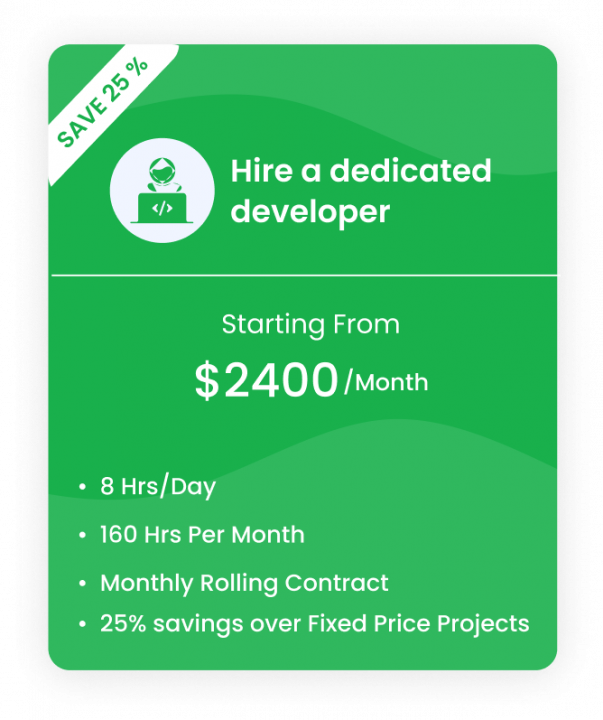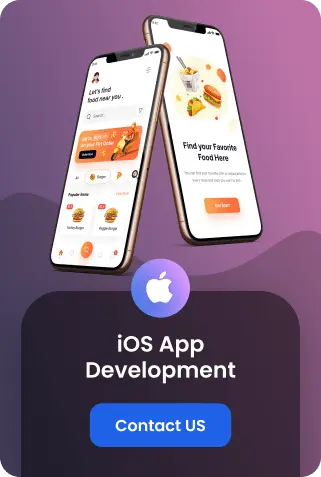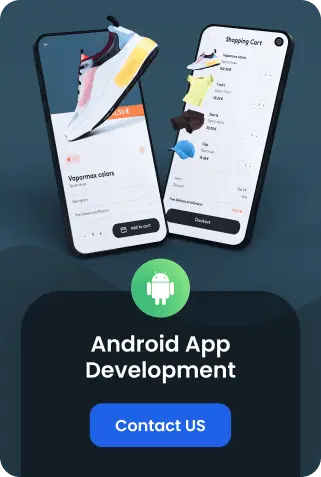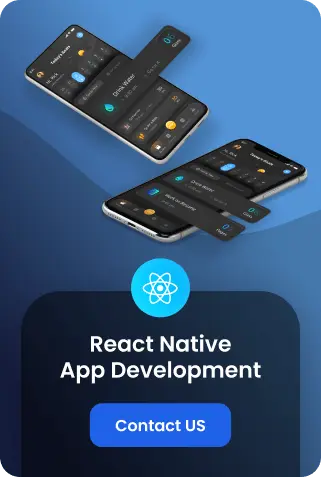Spotify is a popular music streaming service that has revolutionized the music industry by providing a platform where users can listen to millions of songs from different genres and artists, all in one place. Launched in 2008, it has grown to become a giant in the music streaming space, with a global presence and millions of active users. Its user-friendly interface, extensive library, and personalized recommendations have made it a favorite among music lovers worldwide. Through its algorithms and curated playlists, Spotify delivers a unique listening experience tailored to each user’s taste, keeping them engaged and coming back for more. The success of Spotify has not only changed how we consume music but also inspired many entrepreneurs to create their music apps, attempting to capture a piece of this lucrative market.
Creating a music app like Spotify requires a lot of planning, creativity, and technical expertise. Developers need to consider various factors such as user experience, licensing agreements, and the integration of advanced algorithms for music recommendation. User experience (UX) design is critical, as it ensures that the app is intuitive and easy to navigate, enhancing user satisfaction and retention. Securing licensing agreements with artists, record labels, and music publishers is essential to legally stream their content and provide a diverse library. Additionally, building a robust backend infrastructure to handle massive amounts of data and ensuring high-quality streaming without interruptions are crucial steps in the development process. This involves using scalable cloud services and implementing efficient data management practices.
Moreover, integrating advanced algorithms for personalized music recommendations is key to differentiating the app from competitors. These algorithms use machine learning and data analysis to understand users’ listening habits and preferences, offering them curated playlists and song suggestions that keep them engaged. In this guide, we will discuss the key steps involved in creating a successful music app like Spotify, covering everything from the initial concept, market research, and user interface design to backend development, licensing agreements, and launch strategies. We will also explore post-launch activities such as user feedback, continuous improvement, and marketing strategies to ensure the app’s long-term success and evolution in the competitive music streaming landscape.
Music app market: the story of conquering
The music streaming market has seen significant growth in recent years, with the rise of smartphones and better internet connectivity. In 2020, the global music streaming subscriptions reached approximately 400 million, generating a revenue of over $21 billion.
With such a lucrative market, it is no surprise that many businesses are venturing into creating their music apps. However, this also means that competition is fierce, and standing out from the crowd can be challenging.
But despite the tough competition, there are success stories that have inspired many to enter this market. Spotify is undoubtedly one of these success stories. Launched in 2008, it is now the world’s most popular music streaming service, with over 365 million monthly active users and a market value of $65 billion.
Essential features of a music app
To create a successful music app like Spotify, it is essential to understand the key features that are necessary for such an app to thrive in the market. These include:
Audio Streaming
The primary function of a music app is to stream audio seamlessly. This means that users should have access to high-quality audio, with minimal buffering or interruptions, ensuring a smooth and enjoyable listening experience. Additionally, the app should offer a wide variety of music genres to cater to diverse tastes, from classical and jazz to rock and hip-hop. Intuitive navigation is essential to enhance user experience, allowing users to easily find their favorite tracks, create playlists, and explore new music. Personalized recommendations based on listening habits are crucial to keep users engaged and discover new artists and songs they might enjoy. Regular updates to the app are necessary to fix any bugs, introduce new features, and improve performance. A user-friendly interface is also crucial for maintaining a loyal user base, making the app accessible and enjoyable for all users, regardless of their technical proficiency. Furthermore, integrating social features such as sharing playlists with friends or connecting with other music lovers can add a community aspect to the app, making it more interactive and engaging.
Searching music
A music app should have a robust search feature that allows users to quickly find specific songs, artists, or albums. This could include a comprehensive database of songs and artists, ensuring that users have access to a wide variety of music from different genres, eras, and regions. Advanced filters, such as genre, release date, and popularity, should be integrated to help users narrow down their search results effectively. Additionally, the search function should be capable of suggesting related or similar tracks based on users’ preferences and listening history, enabling them to discover new music effortlessly. To enhance user experience further, the app could provide personalized playlists, curated recommendations, and even integration with social media for sharing and discovering music through friends’ suggestions.
Music player
The music player is the heart of a music app and should be user-friendly, visually appealing, and functional. It should have basic controls like play, pause, skip, shuffle, repeat, and volume adjustments. Advanced features such as lyrics display, equalizer settings and custom playlist creation can also enhance the overall listening experience for users. The option to save songs or entire playlists offline can cater to users who want to listen without an internet connection. Additionally, integrating streaming services such as Spotify or Apple Music could provide users with access to a vast library of songs while still keeping them within the app.
AI recommendations
With the help of Artificial Intelligence (AI), music apps can make personalized recommendations based on a user’s listening habits, mood, and even time of day. AI algorithms can analyze data from users’ listening history, liked songs, and skipped tracks to create custom playlists that cater to their musical preferences. This feature not only helps in discovering new music but also keeps users engaged and interested in the app.
Playlist
Playlists are an essential feature of any music app, allowing users to create and save their favorite songs in one place. Besides the ability to create custom playlists, apps can also provide pre-made playlists curated by genre or mood. Moreover, integration with social media platforms like Facebook or Twitter can enable users to share their playlists with friends and discover new music through their suggestions.
Lyrics display
Music apps can also offer a feature to display lyrics in real time while a song is playing. This feature not only enhances the listening experience but also helps users sing along and understand the meaning behind their favorite songs. By providing synchronized lyrics, users can better appreciate the artistry and storytelling of the music. Additionally, this feature can be particularly beneficial for karaoke enthusiasts and language learners who want to improve their pronunciation and comprehension.
Downloading
Users often want to listen to their favorite songs even when they don’t have an internet connection. Whether they’re commuting, traveling, or simply in a location with poor connectivity, having access to music offline is a highly valued feature. Therefore, apps can offer a download feature that allows users to save songs and playlists for offline listening. This feature can also come in handy for those who live in areas with poor internet connectivity or travelers who want to save on data usage. Furthermore, offline listening can enhance the user experience by providing uninterrupted playback, ensuring that users can enjoy their music anytime, anywhere, without worrying about buffering or data limits.
Podcast and radio
Along with music, many music apps offer access to podcasts and radio stations. Podcasts have gained popularity in recent years, and having them integrated into a music app can provide a convenient all-in-one platform for entertainment. Radio stations, on the other hand, offer curated playlists and live broadcasts, giving users a sense of community and connection through shared listening experiences.
Also Read: Introducing Google MusicLM: Revolutionizing Music Creation
Advanced features of a music app
In addition to the essential features mentioned above, music apps often have advanced features that cater to specific user needs and preferences. These features can enhance the listening experience and provide more personalized options for users. Some of these advanced features include:
Musical social network
A musical social network allows users to connect with other music lovers, discover new artists and songs, and share their own playlists and recommendations. This feature can create a sense of community within the app and allow users to expand their music tastes through connections with like-minded individuals.
Customizable user profiles
Some music apps allow users to customize their profiles with profile pictures, bios, and even personalized playlists. This feature can add a personal touch to the app and make the user experience more engaging.
Mood-based music
Many music apps have a feature that allows users to select a specific mood or emotion, and the app will curate a playlist based on that feeling. This feature is perfect for those looking for music to match their current mood or to discover new songs that fit a particular vibe.
Concert tracking
Some music apps have a feature that tracks an artist’s upcoming concerts and events, providing users with the ability to purchase tickets directly or receive notifications when their favorite artists are performing in their area. This feature not only allows for seamless integration between discovering new music and attending live events but also helps fans stay connected with their musical interests. Users can explore detailed event information, share upcoming concerts with friends, and even access exclusive presale opportunities, making the overall experience more engaging and personalized.
Song recognition
Song recognition technology has become increasingly popular in music apps, allowing users to identify songs playing around them and add them directly to their playlists. This feature is convenient for those times when you hear a song but don’t know the name or artist, providing an effortless way to discover new music on the go.
Music therapy and meditation
Music has a powerful effect on our emotions, and many music apps have incorporated this into their features by offering curated playlists for relaxation, meditation, or even music therapy. These features can provide a calming and soothing experience for users looking to unwind or reduce stress levels.
Cross-platform syncing
With the rise of multiple devices and platforms, cross-platform syncing has become a crucial feature for music apps. This allows users to access their playlists, saved songs, and preferences on different devices seamlessly. It also ensures that any changes made on one device are reflected across all others, providing a seamless and uninterrupted listening experience.
Music recommendations from other users
Music discovery can also come from other users within the app, with features such as user-generated playlists or personalized recommendations based on similar music tastes. This creates a sense of community within the app and allows for an even more diverse range of music to be discovered.
How to build a music streaming app in 8 steps
Now that we’ve explored the various features and benefits of music streaming apps, let’s dive into the steps involved in building one.
Step 1: Research your audience
Before developing a music streaming app, it’s crucial to understand your target audience and their preferences. Conduct thorough market research to identify the demographics, interests, and behaviors of potential users. This includes analyzing age groups, musical genres they enjoy, how frequently they listen to music, and what features they value in a music streaming app. Additionally, consider geographic locations to understand regional music preferences and cultural nuances that might affect user engagement. Gathering insights into the type of devices they use, such as smartphones, tablets, or desktops, will also help in optimizing the app’s performance across platforms. Understanding whether they prefer online or offline listening, social sharing options, playlist customization, or integration with other services can further refine your approach. Gathering this comprehensive information will help you tailor your app to meet the specific needs and desires of your audience, ensuring a more successful, user-friendly, and ultimately engaging product.
Step 2: Define the principal features
Based on the insights gathered during market research, it’s essential to determine the core features that your music streaming app will offer. While basic features like song playback and library organization are a given, think about what unique value proposition your app can provide to stand out in a crowded market. Some examples include personalized playlist recommendations, curated content from popular artists or industry experts, offline listening options, song lyrics display, and social sharing capabilities. Prioritize these features based on their relevance and potential impact on user engagement.
Step 3: Acquire official rights to stream
Once you have a clear understanding of your target audience and the key features your app will offer, the next step is to ensure that you have the necessary legal rights to stream music. This involves obtaining licenses from record labels, publishers, and performing rights organizations (PROs) such as ASCAP or BMI. These licenses are essential to legally stream songs and ensure that the artists, songwriters, and other rights holders are compensated for their work. Negotiating these deals can be complex and time-consuming, as it requires careful consideration of various legal and financial aspects. It also involves understanding the different types of licenses, such as mechanical, synchronization, and public performance licenses, each serving different purposes. Therefore, it’s crucial to seek professional guidance from a qualified attorney who specializes in music licensing.
Step 4: Create stunning UI/UX design
The user interface (UI) and user experience (UX) design of your music streaming app are critical factors that can make or break its success. A visually appealing and easy-to-navigate app with intuitive features can greatly enhance the overall user experience and keep users engaged. Consider hiring a professional UI/UX designer who has experience in designing apps for the music industry. Ensure that the design is consistent across all platforms, including mobile, desktop, and web versions of your app. Additionally, regularly gather feedback from beta testers and users to identify any areas for improvement in your app’s design.
Step 5: Choose the technology stack
Selecting the right technology stack is key to building a high-performing and reliable music streaming app. This includes choosing the programming languages, frameworks, libraries, and databases that will power your app’s functionality. Some popular options for developing music streaming apps include JavaScript, Swift, Java, and Python. You may also want to consider using cross-platform development tools like React Native or Flutter to ensure compatibility across different devices. Furthermore, you need to decide on the cloud hosting provider for storing and delivering your music content. Some popular options include Amazon Web Services (AWS), Google Cloud Platform (GCP), or Microsoft Azure.
Step 6. Develop app
After completing the previous steps, you can finally start developing your music streaming app. Begin by creating a minimum viable product (MVP) that includes essential features such as user account creation, playlist creation and management, music search and playback, and social sharing options. These features will form the core functionality of your app, allowing users to create personalized accounts, curate their favorite songs into playlists, search for specific tracks or artists, and share their musical preferences with friends. As you continue to develop your app, regularly test its performance, functionality, and user experience to identify and fix any bugs or issues. Conduct thorough usability testing to ensure that the interface is intuitive and user-friendly. Additionally, gather feedback from early adopters to understand their needs and preferences better, and continuously iterate on your design to improve the overall experience.
Step 7: Testing and tuning
While developing your app, it is crucial to conduct thorough testing to ensure that it functions seamlessly and meets the expectations of your users. This involves testing for compatibility across different devices, operating systems, and network connectivity. You should also test for security vulnerabilities and implement measures to protect user data and prevent unauthorized access. Additionally, continuously monitor the performance of your app and make necessary adjustments or optimizations to improve its speed, responsiveness, and overall user experience. Regularly gather feedback from users and use analytics tools to track usage patterns, identify areas for improvement, and make data-driven decisions for future updates.
Step 8: Launch the app and collect feedback
After thorough testing and tuning, it’s time to launch your app and make it available for users to download. Begin by submitting your app to major app stores like Google Play and the Apple App Store, ensuring all guidelines are met for a smooth approval process. Once your app is live, promote it through various channels such as social media, app directories, and online communities. Utilize platforms like Facebook, Twitter, Instagram, and LinkedIn to reach a wider audience, and consider leveraging influencer partnerships to gain more visibility. Encourage users to provide feedback on their experience with the app. Prompt them to leave reviews and ratings in the app stores, as well as comments on social media and forums. Listen to their suggestions and incorporate them into future updates to show that you value their input. Continuously iterate on your design, add new features, and fix any bugs or issues that arise. Regular updates not only keep your app fresh but also demonstrate your commitment to improvement.
Read More: Top 20+ Best Free Music Streaming Apps in 2024
Tech stack for a music app
As with any software development project, choosing the right technology stack is crucial for creating a successful music app. Here are some essential technologies to consider when building a music app:
1. Programming languages:
Choose a language that best fits your requirements, skill set, and budget. Two popular options for developing both iOS and Android apps include Swift and Java. JavaScript is another versatile language used in hybrid or cross-platform development frameworks like React Native or Flutter.
2. Integrated Development Environment (IDE):
An IDE provides an all-in-one environment for coding, debugging, testing, and deploying your app. Some popular options for mobile app development include Xcode for iOS and Android Studio for Android.
3. User Interface (UI) Design Tools:
Creating a visually appealing and user-friendly interface is crucial for any music app. Popular UI design tools include Sketch, Figma, Adobe XD, or Photoshop.
4. Backend Development:
A server-side infrastructure is necessary to store and manage data, handle user authentication, and perform other important backend tasks. Some popular backend languages for developing music apps are Node.js, Python, or Java.
5. Cloud Storage Solutions:
Cloud storage solutions like Amazon Web Services (AWS), Google Cloud Platform, or Microsoft Azure provide reliable and scalable storage for your app’s data.
How much does a music streaming app cost?
The cost of developing a music streaming app can vary widely depending on multiple factors such as the complexity of features, the technology stack, design requirements, and the geographical location of the development team. Here are some estimated costs:
- Basic Music Streaming App: A simple app with essential features like music playback, user registration, and playlist creation can cost between $20,000 to $50,000 to develop. This type of app usually includes a basic user interface, the ability to search and play songs, and options to create and manage playlists. It is suitable for startups or businesses looking to enter the music streaming market with a minimal viable product.
- Moderate Music Streaming App: An app with more advanced features such as social sharing, offline mode, in-app purchases, and recommendations might range from $50,000 to $100,000. This category includes additional functionalities like allowing users to share their favorite tracks on social media, download songs for offline listening, and purchase premium services within the app. Users might also receive tailored music recommendations based on their listening habits, enhancing their overall experience.
- Advanced Music Streaming App: A fully-featured app, including those with music licensing, high-end security, AI-based recommendations, extensive back-end infrastructure, and support for multiple platforms, could cost from $100,000 to $500,000 or more. These apps are designed to compete with industry giants like Spotify and Apple Music. They offer sophisticated features such as securing music rights, implementing robust security measures to protect user data, using artificial intelligence to provide highly accurate music recommendations, and ensuring the app functions seamlessly across various devices and operating systems. These apps require significant investment but offer a comprehensive and premium user experience.
Suggested: How Much Does it Cost to Create An App
Challenges in music streaming app development
Developing a music streaming app can be a complex and challenging process. Some of the common challenges faced by developers in this domain include:
Music licensing
Obtaining the necessary licenses to stream music on a digital platform can be a complex and costly process. Music licensing involves negotiating with multiple record labels, publishers, and artists to secure the rights to use their music. This requires extensive legal knowledge and resources.
Finding experienced music app developers
Developing a music streaming app requires specialized skills and experience in areas such as audio processing, digital rights management, content delivery networks, and user interface design. Finding developers with the necessary expertise can be challenging.
Data storage and scalability management
Music streaming apps deal with large volumes of data, including audio files, user profiles, and preferences. Proper management of this data is crucial for the app’s performance and scalability. Developers must carefully plan and implement storage solutions that can handle increasing amounts of data as the user base grows.
Audio quality and compression balance
Delivering high-quality audio streaming while also ensuring efficient data compression can be a tricky balancing act. Developers must find the right balance between providing a seamless listening experience and minimizing data usage for users with limited internet access. This involves sophisticated algorithms and techniques to compress audio without significant loss of quality. Additionally, they must consider different network conditions and device capabilities to optimize performance across various scenarios. The goal is to ensure that all users, regardless of their internet speed or device, can enjoy high-quality audio without excessive data consumption.
Cross-platform compatibility
Another challenge for music app developers is ensuring cross-platform compatibility. With a diverse market of devices and operating systems, it can be daunting to develop an app that runs smoothly on all platforms. Developers must take into account different hardware capabilities, screen sizes, and user interfaces to create a seamless experience across various devices.
User data privacy
With the increasing concerns surrounding user data privacy, music streaming apps must prioritize the security and protection of user information. This includes implementing secure storage solutions for sensitive data such as login credentials and payment details. Developers must also comply with relevant data privacy regulations and regularly update their security protocols to prevent any potential breaches.
How to monetize a music streaming app
Freemium model
One popular monetization strategy for music streaming apps is the freemium model. This involves offering a basic version of the app with limited features and advertisements, while also providing a premium version for a subscription fee. Users can enjoy an ad-free experience and additional features such as offline listening by upgrading to the paid version.
In-app advertisement
Another common way for music streaming apps to generate revenue is through in-app advertisements. These can be in the form of banner ads, video ads, or sponsored content. However, developers need to balance the placement and frequency of these ads to avoid disrupting the user experience.
Subscriptions
In addition to the freemium model, some music streaming apps offer subscription plans for users to access their full catalog of music. This gives users unlimited access to all songs and features without any advertisements. Developers can also offer different subscription tiers with varying prices and benefits to cater to different types of users.
Promotions
Music streaming apps can also generate revenue through partnerships and promotions with artists, labels, and brands. This could include sponsored playlists or exclusive releases on the app. Collaborating with popular artists can attract new users and increase engagement.
How can iTechnolabs help you to build a Music App Like Spotify?
iTechnolabs is a leading software development company that specializes in creating cutting-edge mobile applications. Our team of experienced developers and designers can help you bring your idea for a music streaming app to life, with all the features and functionalities of popular apps like Spotify. We offer end-to-end solutions, from the initial concept and design phase to development, testing, and deployment. Our expertise ensures that your app will not only look great but also deliver a seamless and engaging user experience. Partner with us to turn your vision into a reality and stay ahead in the competitive music streaming market. We offer customized solutions tailored to your specific requirements, ensuring that your music app stands out from the competition. Our services include:
- UI/UX design: Our team will work closely with you to create an intuitive and visually appealing interface for your app.
- Cross-platform compatibility: We develop apps that are compatible with both iOS and Android devices, reaching a wider audience.
- Music streaming functionality: We can integrate music streaming capabilities into your app, allowing users to listen to their favorite songs on the go.
- Social media integration: Building social features into your app can enhance user engagement and make it easier for users to share and discover new music.
- Data analytics: Our developers can implement data tracking tools to provide valuable insights into user behavior, helping you improve the app’s performance.
- Security measures: With the increasing concerns over online privacy, we prioritize implementing robust security measures in our apps to protect user data.
Are you planning to create a music app like Spotify?
Contact us!
Partnering with iTechnolabs for your music app development comes with numerous benefits, ensuring that your app not only meets but exceeds industry standards. Our team brings a wealth of experience in developing top-tier music apps, ensuring high performance and user satisfaction. Here are some of the key benefits you can expect:
- Expertise in Music Streaming Technology: iTechnolabs specializes in integrating advanced music streaming technologies, guaranteeing smooth and high-quality audio playback. This expertise ensures that your users enjoy a seamless listening experience.
- Customizable Features: We understand that each music app has unique requirements. Our solutions are highly customizable, allowing you to incorporate features that set your app apart from competitors, such as unique music discovery algorithms, personalized playlists, and exclusive content.
- Scalability: As your user base grows, so should your app. Our development framework allows for scalability, enabling your app to handle increasing numbers of users without compromising performance. This ensures that your app can grow alongside your business.
- User-Centric Design: Our UI/UX design team focuses on creating an intuitive and engaging user interface. A user-friendly design enhances user retention and satisfaction, crucial for the success of any app.
- Cross-Platform Support: By developing apps that work seamlessly on both iOS and Android platforms, iTechnolabs ensures you can reach the broadest possible audience. This cross-platform compatibility maximizes your app’s market potential.
- Robust Security: Protecting user data is paramount, especially in the digital music industry. Our developers implement the latest security protocols to safeguard your app against breaches and ensure user trust.
- Continuous Support and Maintenance: Post-launch support is vital for the longevity of any app. We provide continuous support and updates, addressing any issues promptly and keeping your app up-to-date with the latest technological advancements and market trends.
Important: How to Build a Music Player App?
Conclusion:
At iTechnolabs, we pride ourselves on delivering top-quality music app development solutions that cater to your unique business needs. With our experienced team of mobile app developers and designers, we ensure that your app stands out in the competitive world of digital music. Our focus on features, scalability, user-centric design, cross-platform support, robust security, and continuous support makes us the perfect partner for bringing your music app idea to life.
FAQ s
What makes a good music app?
A good music app should have a user-friendly interface, seamless cross-platform compatibility, robust security measures to protect user data, continuous support and maintenance services, and unique features that cater to the needs of its target audience. It should also stay updated with the latest technological advancements and market trends in the digital music industry. Overall, a good music app should prioritize user satisfaction and provide a smooth and engaging experience for its users. So it’s essential to choose a reliable development partner like iTechnolabs to ensure your app’s success. We specialize in creating top-quality music apps that satisfy all these criteria and more.
What does a music app need?
A music app needs to have a variety of features such as a user-friendly interface, personalized playlists, curated content, easy navigation, social sharing options, cross-platform compatibility, and robust security measures. It should also have continuous support and maintenance services to ensure timely bug fixes and updates. Additionally, incorporating unique features like live streaming, offline listening, and concert ticket purchases can make the app stand out from its competitors. A good music app should cater to the diverse needs of its users while providing an enjoyable and engaging experience. iTechnolabs understands these requirements and works diligently to create cutting-edge music apps that meet these expectations.
How much does it cost to build a music streaming app like Spotify?
The cost of building a music streaming app like Spotify can vary depending on various factors such as the complexity of features, design elements, development platform, and more. On average, it can range from $50,000 to $500,000. However, partnering with an experienced development team like iTechnolabs can help you streamline the process and reduce costs while ensuring high-quality results. Contact us for a personalized quote based on your specific requirements. Overall, investing in a well-built music app can lead to significant returns in terms of user engagement and revenue generation. So choose wisely and make sure to prioritize quality over cost.
What licenses are needed to start a music streaming app?
To legally operate a music streaming app, you would need to obtain the necessary licenses from performance rights organizations (PROs) such as ASCAP, BMI, and SESAC. These licenses allow you to use copyrighted music in your app and distribute royalties to artists and songwriters. Additionally, you may also need a mechanical license from publishers for interactive streaming or downloading of songs. It is important to consult with a legal professional and obtain all required licenses before launching your app to avoid any potential copyright infringement issues.
